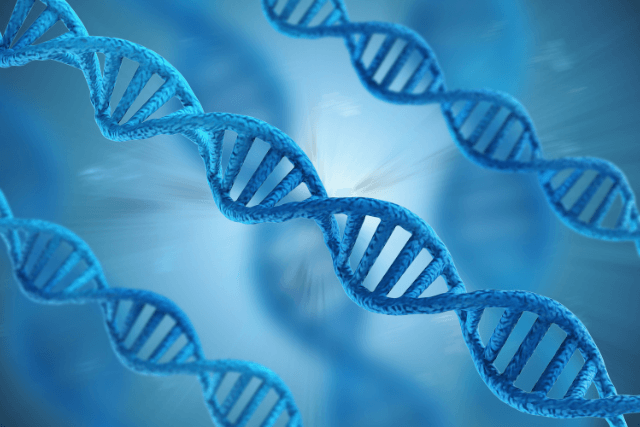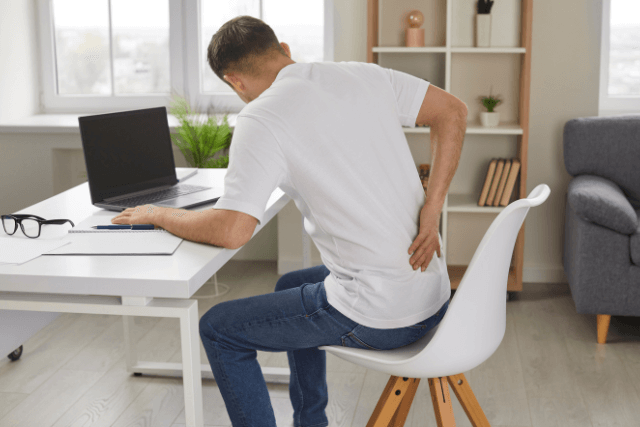Pilonidal cysts are painful, often recurring bumps that develop near the tailbone, causing discomfort and distress. Many people affected by this condition wonder, “Is pilonidal cyst hereditary?” The answer is not entirely straightforward, as a combination of genetic and environmental factors can contribute to the development of these cysts.
In this blog, we will explore the hereditary nature of pilonidal cysts, their causes, symptoms, and effective treatment options, including the innovative Sinus Laser-Assisted Closure (SiLaC®) technique.
What is a Pilonidal Cyst?
Before diving into the hereditary aspect of pilonidal cysts, let’s first understand what they are. A pilonidal cyst is a small, fluid-filled sac that forms in the skin near the tailbone. It can sometimes become infected, leading to pain, swelling, and the formation of an abscess. This condition most commonly affects young adults, particularly those between the ages of 16 and 30.
While the exact cause of pilonidal cysts is not always clear, some factors seem to increase the likelihood of developing them. These include prolonged sitting, excess hair growth around the tailbone, or a history of trauma to the area.

Is Pilonidal Cyst Hereditary?
Now that we know what a pilonidal cyst is, the next logical question is: “Is pilonidal cyst hereditary?” The answer to this question is both yes and no.
While it is not strictly genetic in the same way that conditions like cystic fibrosis or hemophilia are, there seems to be a hereditary component that increases a person’s risk of developing a pilonidal cyst. Research suggests that people with a family history of pilonidal disease are more likely to develop the condition themselves. Studies show a higher pilonidal cyst risk in people with a family history, like affected parents or siblings.
That said, it’s important to note that genetics are just one piece of the puzzle. Environmental factors, lifestyle choices, and even personal hygiene can contribute to the development of a pilonidal cyst, regardless of family history.
How Genetics Influence Pilonidal Cysts
Genetics may play a role in pilonidal disease, as some theories link family history to increased risk. One of the primary ideas is that genetics could play a role in the formation of the hair follicles around the tailbone. Some people are genetically prone to excess hair in the area, increasing the risk of ingrown hairs and cysts. Additionally, some families may have a higher likelihood of having skin types that are more prone to developing these cysts.
Despite the hereditary aspect, it’s essential to remember that the presence of a pilonidal cyst in the family does not guarantee that an individual will develop one. Many people without any family history of the condition also experience pilonidal cysts.
Symptoms of Pilonidal Cysts
Pilonidal cysts can range from asymptomatic (showing no symptoms) to extremely painful, particularly if an infection occurs. The common symptoms of pilonidal cysts include:
- Pain or tenderness near the tailbone.
- Swelling in the area, often accompanied by redness and warmth.
- Drainage of pus or blood if the cyst becomes infected.
- Foul-smelling discharge from the cyst.
- Visible cysts or abscesses that may appear as lumps.
If the cyst becomes infected, it may cause significant pain, fever, and swelling, which can make sitting or even walking uncomfortable.
Secondary Causes of Pilonidal Cysts
While we’ve discussed the hereditary factors, it’s important to recognize that pilonidal cysts can also be triggered by several secondary factors. These include:
- Prolonged sitting: People who spend long hours sitting such as truck drivers, office workers, or athletes are at a higher risk.
- Excessive hair growth: This can cause hair to get trapped in the skin, contributing to cyst formation.
- Obesity: Individuals with excess body weight may be more prone to developing pilonidal cysts due to increased friction in the tailbone area.
- Poor hygiene: Not maintaining proper cleanliness in the area may contribute to the formation of cysts, especially if hair gets trapped or clogged in the skin pores.
Even with these risk factors, it’s not a guarantee that an individual will develop a pilonidal cyst. Lifestyle changes, good hygiene, and proactive care can often help in preventing the cysts from forming.
Treatment Options for Pilonidal Cysts
If you’ve been diagnosed with a pilonidal cyst, the next step is understanding your treatment options. Treatment options for pilonidal cysts depend on severity and range from simple care to surgical procedures.
Conservative Treatments
- Antibiotics: If the cyst becomes infected, a doctor may prescribe antibiotics to treat the infection before proceeding with any surgical treatment.
- Drainage: If an abscess forms, a doctor may perform a procedure to drain the pus, providing temporary relief. However, drainage alone may not be enough to fully resolve the issue, and cysts can reoccur.
Surgical Treatment
In more severe cases, surgery may be necessary to remove the cyst. There are several surgical techniques available, including:
- Excision: This involves cutting out the cyst and stitching up the wound. The downside is that it can be painful and may require a long recovery period.
- Flap Surgery: Advanced surgery using nearby healthy tissue flap to close wounds, typically for larger or complex cysts.
Sinus Laser-Assisted Closure (SiLaC®)
Sinus Laser-Assisted Closure (SiLaC®) is an innovative, minimally invasive laser treatment for pilonidal disease.
It has gained popularity in recent years due to its effectiveness and minimal invasiveness.
This method offers quicker recovery, less pain, and a lower recurrence rate than traditional surgical options.
During the SiLaC® procedure, a laser removes hair and debris from inside the cyst. The cyst cavity is then closed using a laser-assisted closure technique.
This treatment lowers the risk of infection and speeds up healing. It is a favorable option for many with pilonidal disease.

How Can Pilonidal Cysts Be Prevented?
While it’s not always possible to prevent pilonidal cysts, there are some steps you can take to reduce your risk:
Maintain good hygiene: Regularly clean the tailbone area to prevent hair from getting trapped.
Avoid prolonged sitting: If your job or lifestyle involves sitting for long periods, try to stand up and move around regularly.
Keep the area hair-free: Some people find that keeping the area around the tailbone trimmed or hair-free helps prevent cyst formation.
Lose excess weight: If you’re of higher weight, losing weight may reduce the risk of developing a pilonidal cyst by reducing friction and pressure on the area.
Conclusion: Is Pilonidal Cyst Hereditary?
So, is pilonidal cyst hereditary? While there is a genetic component that may increase the likelihood of developing a pilonidal cyst, it is not the sole factor. Both genetic and environmental factors, including lifestyle choices and hygiene habits, play a role in the development of pilonidal disease.
If you have a pilonidal cyst or family history, consult a healthcare professional to explore treatment options. SiLaC® is a minimally invasive, effective treatment that offers many patients faster recovery and reduced discomfort.
Learn what causes pilonidal cysts to take proactive steps in managing them effectively.
FAQ
Can pilonidal cysts come back after treatment?
Yes, pilonidal cysts can recur, especially if the cyst is not fully removed or if the underlying causes are not addressed. However, treatments like SiLaC® have a lower recurrence rate compared to traditional methods.
How long does it take to recover from SiLaC® surgery?
Recovery from SiLaC® is typically quicker than traditional surgery. Most patients can return to normal activities within a few days, though full healing may take several weeks.
Are pilonidal cysts always painful?
Not always. Some pilonidal cysts are asymptomatic and do not cause any pain or discomfort. However, if the cyst becomes infected or develops into an abscess, it can become quite painful.



